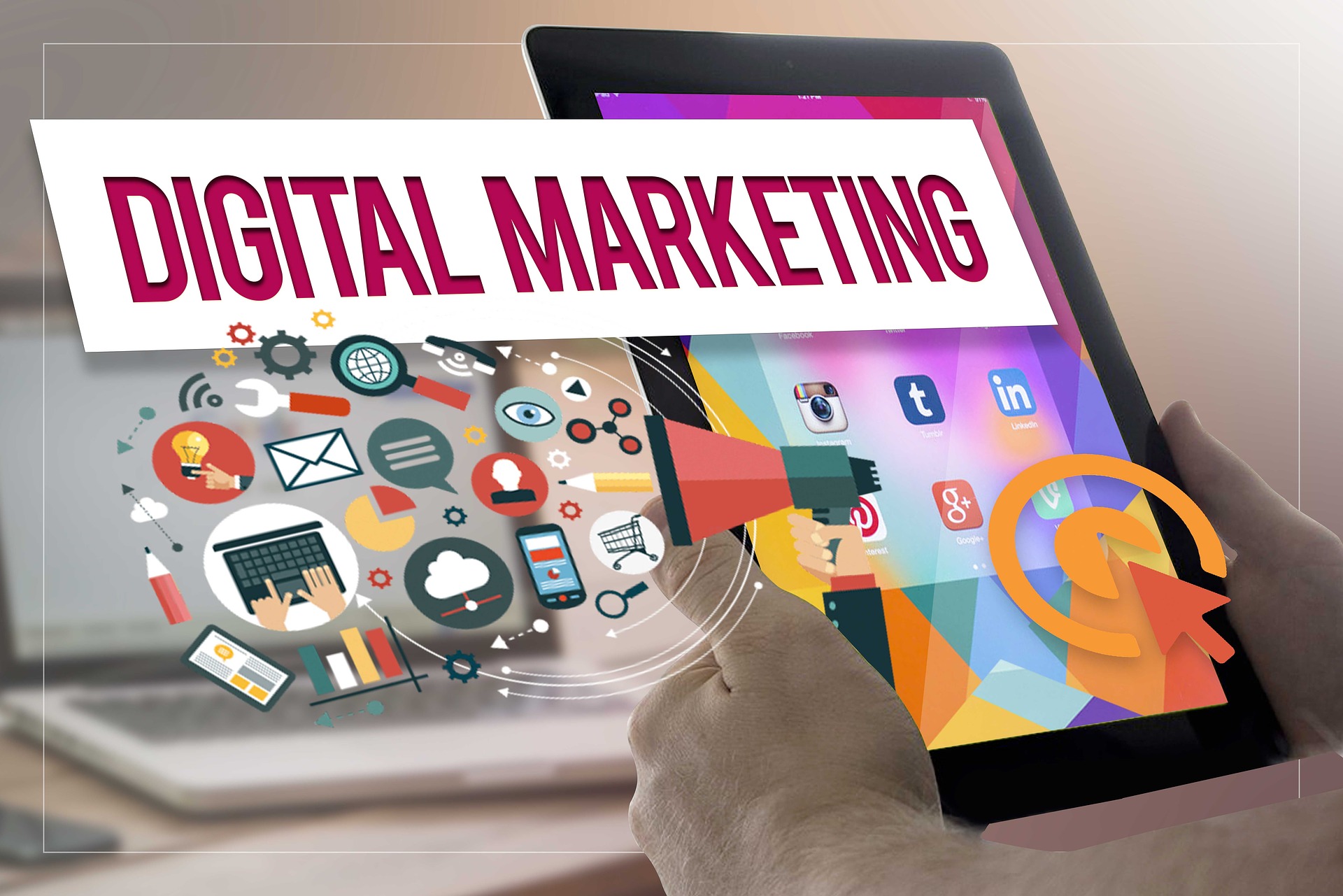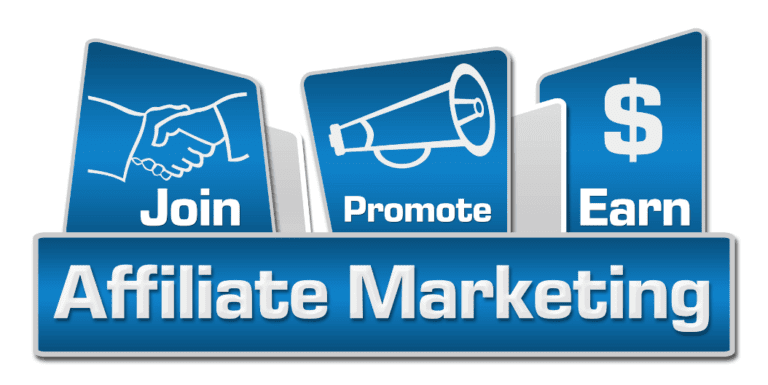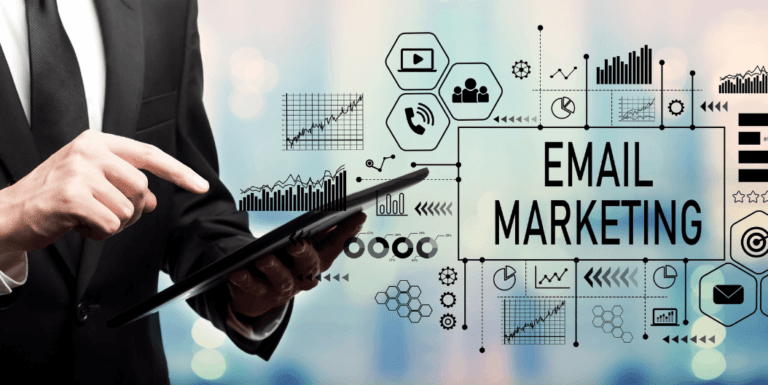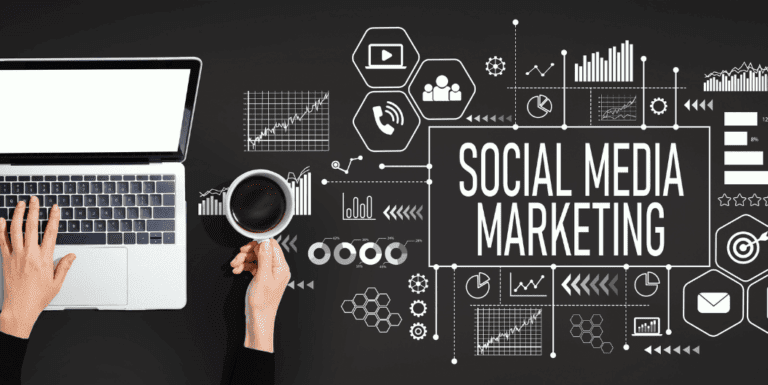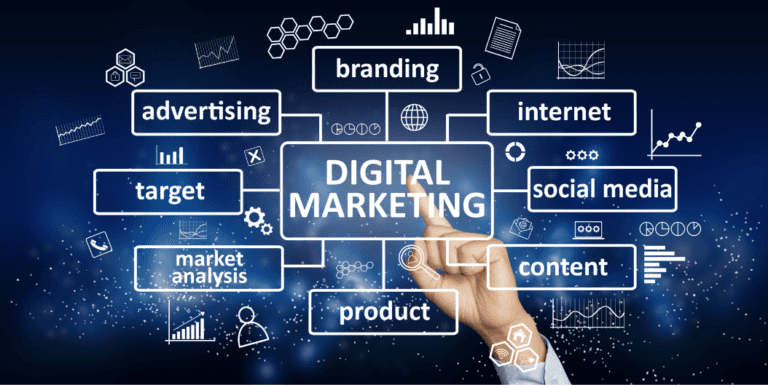What Are Digital Marketing Types? How To Use Them
As digital marketing covers a wide range of activities, and there are many digital marketing types. You must carefully select the digital marketing most suited to your target audience. Each digital marketing type has its strengths and weaknesses. So it’s essential to choose the digital marketing type that will allow you to reach your target audience most effectively.
There are many factors to consider when selecting the right digital marketing type for your business. Take the time to do your research and understand your options. Then you’ll be able to choose the right digital marketing type for you.
What are digital marketing types?
Digital marketing is the process of using online channels to promote or market products and services. Some common digital marketing types include search engine optimization (SEO), pay-per-click (PPC) advertising, social media marketing, and email marketing.
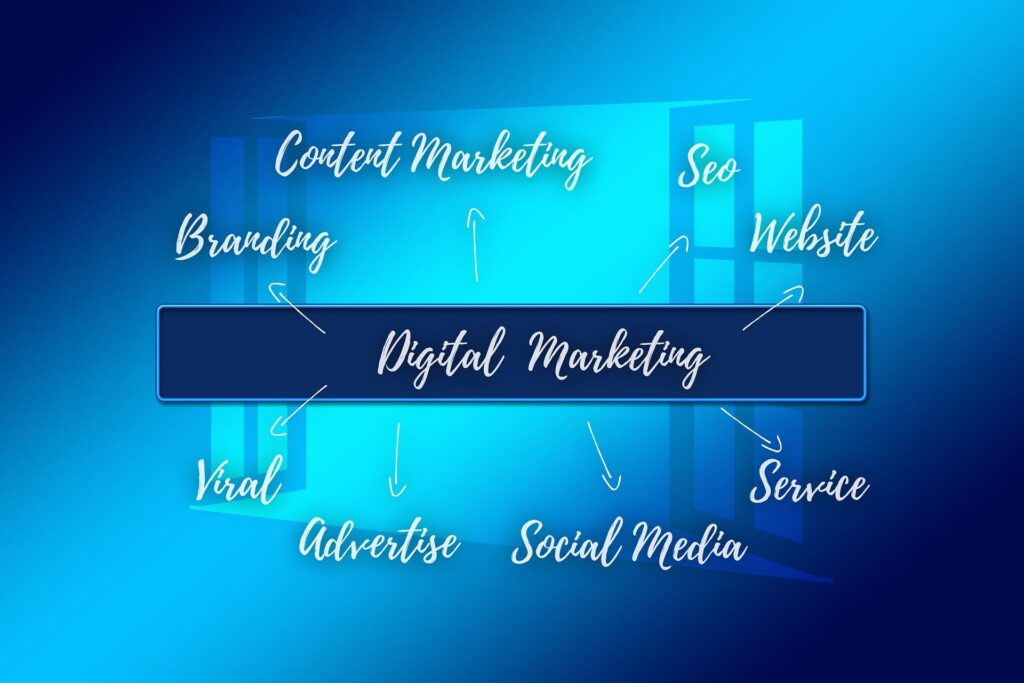
The Most Common Digital Marketing Types.
Search Engine Optimization (SEO)
It is the process of optimizing a website for Google search to earn higher web traffic and improve the site’s visibility.
It can be performed through several different strategies. For example, On-page optimization (such as keyword research and meta tag creation). Off-page optimization (such as link building and content marketing). And technical SEO (which focuses on optimizing a website’s infrastructure and code).
Search Engine Marketing (SEM)
Search Engine Marketing (SEM) is the process of optimizing a website to increase its rank in the search engine results pages for specific targeted keywords.
It includes the paid advertisements placed on search engines (usually through pay-per-click advertising) and the optimization of a website’s content and structure to improve its ranking in the search engine results pages.
Social Media Marketing (SMM)
Social Media Marketing (SMM) is using social media platforms like Facebook, Twitter, and LinkedIn to build customer relationships. It involves creating and sharing content that is relevant to your audience, as well as engaging with them in conversations.
Content Marketing
Content Marketing is the process of creating and distributing valuable, relevant, and consistent content. To attract and retain a clearly defined audience. The purpose of content marketing is to drive profitable customer action.
Email Marketing
Email Marketing is the process of sending marketing messages. (Such as product announcements, special offers, and other promotional content) to customers via email. It is an effective way to reach a large audience with a personalized message.
Affiliate Marketing
Affiliate marketing is a type of digital marketing in which businesses promote one another’s products or services. In return, they receive a commission on any sales generated.
Pay-Per-Click (PPC) Advertising
Pay-Per-Click (PPC) is a type of online advertising, In which businesses pay to have their ads displayed on Google search results pages.
Mobile Marketing
Mobile Marketing is reaching out to potential and current customers using mobile devices such as smartphones and tablets. It can involve many strategies, such as text messaging, app-based advertising, and push notifications.
Internet Marketing
Internet Marketing is the process of promoting a business or brand through online channels. There are many different types of internet marketing. The most common are SEO, social media marketing, and paid to advertise.
Local Search Marketing
Local search marketing is optimizing a website for local search results. Can be done through several strategies, such as creating listings on local directories and search engines, optimizing the website for local keywords, and creating location-specific content.
Online Reputation Management (ORM)
ORM is the process of monitoring and managing a brand’s online reputation. Can be done through several strategies, such as monitoring online reviews and social media mentions, positively responding to negative thoughts, and proactively building up a positive online reputation.
Marketing Analytics
Marketing Analytics measures, manages and analyzes marketing performance to make better decisions and improve results. It can involve many activities, such as tracking website traffic and conversion rates, measuring the impact of digital marketing campaigns, and understanding customer behavior.
Lead Generation
Lead Generation is the process of generating leads (potential customers) for a business. Can do it through many digital channels, such as website forms, social media, and email marketing.
Conversion Rate Optimization (CRO)
CRO is the process of optimizing a website to increase its ability to convert visitors into customers. Can do it through various means, such as optimizing the website for higher search engine rankings, improving the quality of the site’s content, or making the site more user-friendly.
Influence Marketing
Influence Marketing is a type of digital marketing that focuses on building relationships with influencers (people who can influence others).
Viral Marketing
Viral Marketing is a type of digital marketing that relies on social sharing to spread a message or promote a product.
Word-of-Mouth Marketing
Word-of-mouth marketing is a type of digital marketing that relies on personal recommendations from friends, family, and other people to promote a product or service.
Display Advertising
Display Advertising refers to banner ads and other visual advertising displayed on websites.
Online Advertising
Online Advertising is a digital marketing type that involves placing ads on websites.
Native Advertising
Native Advertising is a digital marketing type that involves creating and placing ads that blend in with the surrounding content.
Virtual Reality Marketing
Virtual Reality is a digital marketing type that uses virtual reality technology to create immersive experiences that promote products or brands.
Augmented Reality Marketing
Augmented Reality Marketing is a type of digital marketing that uses augmented reality technology to create interactive experiences that promote products or brands.
Video Marketing
Video Marketing is creating and distributing videos to promote a product or service.
Live Streaming
Live Streaming is the process of real-time broadcasting video to an audience over the internet.
Audio Marketing
Audio Marketing is marketing a product or service through audio channels such as radio, podcasts, and digital audio.
As you can see, there are many different digital marketing types. And while some businesses may only need to focus on one or two of these types, most companies will need to use several to be successful. So, if you’re thinking about starting digital marketing for your business, keep these different types of digital marketing in mind. Create a digital marketing strategy that works for your business.
How can digital marketing be used to reach your target audience?
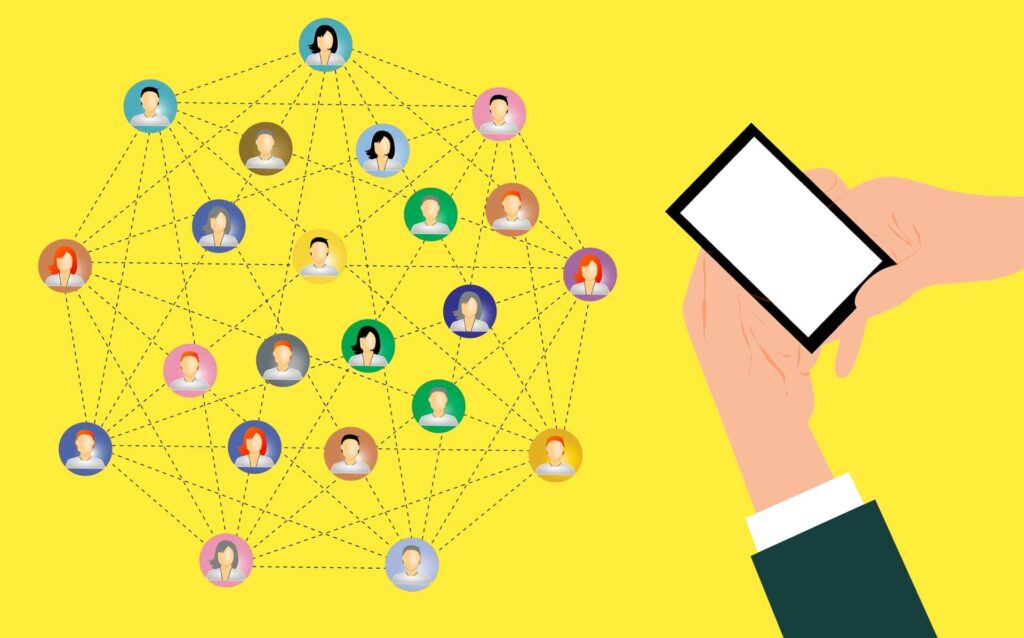
Digital marketing is a solution to reach your target audience in many ways. It depends on your business type and the products or services you sell.
The most common types of digital marketing are search engine optimization (SEO), pay-per-click (PPC) advertising, content marketing, social media marketing, and email marketing. Each of these has its strengths and weaknesses. So, choosing the right digital marketing platform for your business is essential.
For example, if you’re a B2B company selling complex products or services. SEO may be a more effective digital marketing strategy than PPC advertising. On the other hand, if you’re a B2C company selling consumer goods, PPC may be a better option.
Understanding your target audience and what they want is crucial regardless of the form of digital marketing you select. Once you know this, you can create content and marketing campaigns that speak directly to them and meet their needs.
What are future trends in digital marketing?
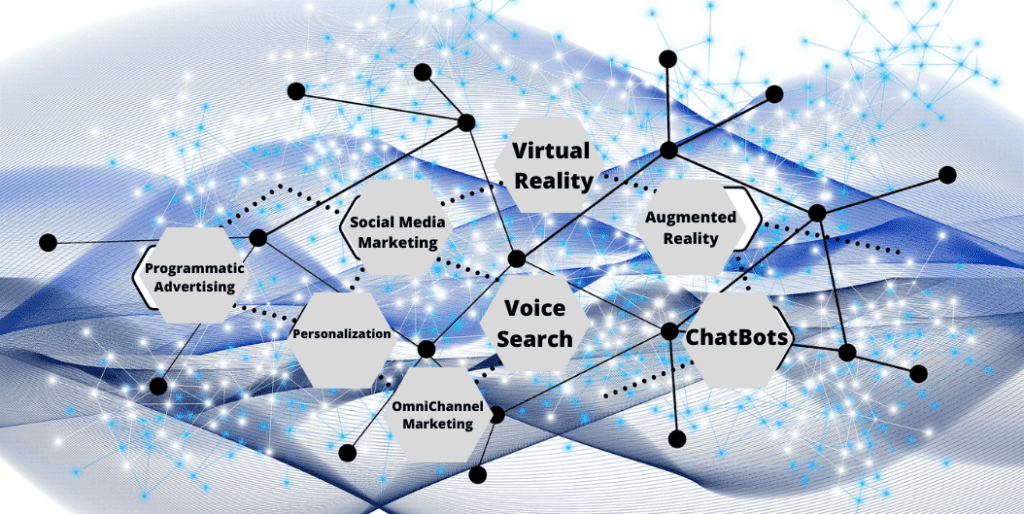
Digital Marketing is constantly evolving. What’s hot today may be old news tomorrow. So what trending digital marketing types can we expect to see in the future?
Virtual Reality
Virtual Reality (VR) is no longer just a science fiction concept. It’s quickly becoming a reality, thanks to advances in technology. And it looks set to revolutionize digital marketing.
With VR, businesses can transport their customers to another world where they can experience their products or services first-hand. It will give customers a much deeper level of engagement with the brand.
Augmented Reality
Augmented Reality (AR) is another emerging digital marketing type that looks to change the digital marketing landscape. AR allows businesses to superimpose digital content in the real world. Can use this in various ways, such as providing customers with information about products they’re interested in or helping them visualize how a piece of furniture would look in their home.
ChatBots
Chatbots are computer programs that simulate human conversation. Businesses already use them to provide customer support and carry out marketing tasks. In the future, Chatbots will become even more sophisticated and will be able to handle more complex tasks, such as booking appointments and making recommendations.
Voice Search
Voice Search is another digital marketing trend that’s on the rise. With the increasing popularity of virtual assistants, such as Amazon’s Alexa and Google Home, more and more people are using voice search to find information online.
Social Media Marketing
Social Media Marketing is nothing new. But it’s constantly evolving, and businesses must keep up with the latest trends to stay ahead of the competition.
Some of the latest social media marketing trends include live streaming, micro-influencers, and ephemeral content (content that disappears after a certain amount of time).
Personalization
Personalization is another digital marketing trend that’s here to stay. With technological advances, businesses can now collect customer data and use it to create highly personalized experiences.
Omnichannel Marketing
Omnichannel Marketing is an approach that considers the different ways customers interact with businesses. It moves away from traditional marketing, focusing on one channel, such as television or print.
With omnichannel marketing, businesses must be present on various channels, such as social media, email, and SMS. And they need to ensure that their marketing messages are consistent across all these channels.
Programmatic Advertising
Programmatic Advertising is a form of digital marketing that uses algorithms to automate the buying and selling of ad space. It allows businesses to target their ads more effectively, as they can choose specific demographics, interests, and even individual users.
What are common digital marketing mistakes?
There are some digital marketing mistakes that businesses make which can limit the effectiveness of their campaigns. One common mistake is failing to integrate digital marketing into their overall marketing strategy. A company may have a great website, but if they’re not using digital channels to drive traffic to it, then they’s missing out on a vital opportunity to reach potential customers.
Another common mistake is not using suitable types of digital marketing channels. A business may rely too heavily on one track, such as paid search, and miss out on the benefits that other channels can provide. For example, they may neglect to use social media to connect with potential customers and build relationships.
Finally, a digital marketing mistake that businesses make is not tracking and measuring the results of their digital marketing campaigns. Without this data, it’s challenging to determine what’s working and what’s not and make necessary adjustments to improve the effectiveness of future campaigns.
By avoiding these common digital marketing mistakes, you can set yourself up for success with your digital marketing efforts. Integration, suitable types of digital marketing channels, and tracking and measurement are all key to a successful digital marketing strategy.
Conclusion:
In Summary, Digital marketing is an essential part of any modern business. Understanding the different digital marketing types and how to use them to reach your target audience. You can create a successful digital marketing strategy to help you achieve your business goals.
To succeed with digital marketing, you need to identify the digital marketing channels that will work best for you and your target audience. Secondly, you must also keep up with the latest digital marketing trends and ensure that your campaigns are integrated into their overall marketing strategy.
Finally, you need to track and measure the results of your digital marketing efforts to ensure that they’re getting the most out of their campaigns. So Keep an eye out for future trends in digital marketing, and avoid common mistakes, and you’ll be well on your way to success.

